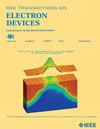调制信号激励下射频滤波器多因子阈值快速准确粗预测方法
IF 2.9
2区 工程技术
Q2 ENGINEERING, ELECTRICAL & ELECTRONIC
引用次数: 0
摘要
多处理器是制约星载硬件系统性能的关键大功率因素。尽管现代粒子模拟器允许任意几何形状和信号作为输入,但它们的实际应用通常仅限于连续波(CW)激励。不幸的是,对于输入调制信号的多因子分析通常会导致过大的CPU时间,因为与电子种群的演化时间相比,信号长度非常大。粗方法是克服这一限制的一种优雅的方法,它在减少CPU时间的情况下提供了对多因子阈值的良好估计。然而,如果输入信号在分析之前没有进行预处理,则该方法无法解释频率依赖性,因为它使用在单个频率下提取的电子动力学信息,导致窄带样本作为滤波器的预测有偏差。本文通过考虑样本响应和调制信号的频谱分布来考虑频率依赖性,提出了对原始粗方法实现的扩展。该方法适用于估计调制信号激励下窄带样本的多因子阈值,同时保持了粗方法的简单、高效和通用性。提出的方法与实验室测量结果以及粒子模拟器和传统粗方法预测进行了基准测试,揭示了新技术的优势及其应用范围。本文章由计算机程序翻译,如有差异,请以英文原文为准。
A Fast and Accurate Coarse Method for Multipactor Threshold Prediction of RF Filters Under Modulated Signal Excitation
Multipactor is a key high-power effect limiting the system performance for onboard satellite hardware. Although modern particle simulators admit arbitrary geometries and signals as inputs, their practical use is often limited to continuous-wave (CW) excitations. Unfortunately, the multipactor analysis for input-modulated signals normally leads to prohibitively large CPU times, as signal lengths are very large compared to the electron population’s evolution time. The Coarse Method is an elegant way of overcoming this limitation, providing a good estimate of the multipactor threshold in reduced CPU times. However, if the input signal is not preprocessed before being analyzed, the method is unable to account for the frequency dependence as it operates with electron dynamics information extracted at a single frequency, leading to biased predictions for narrowband samples as filters. This article proposes an extension to the original Coarse Method implementation by considering the sample response and the modulated signal spectral distribution to account for the frequency dependence. The resulting method is suitable for estimating the multipactor threshold of narrowband samples excited by modulated signals, while keeping the benefits in terms of simplicity, efficiency, and generality of the Coarse Method. The proposed approach is benchmarked against laboratory measurement results, as well as particle simulators and legacy Coarse Method predictions, revealing the advantages of the novel technique and its range of applications.
求助全文
通过发布文献求助,成功后即可免费获取论文全文。
去求助
来源期刊

IEEE Transactions on Electron Devices
工程技术-工程:电子与电气
CiteScore
5.80
自引率
16.10%
发文量
937
审稿时长
3.8 months
期刊介绍:
IEEE Transactions on Electron Devices publishes original and significant contributions relating to the theory, modeling, design, performance and reliability of electron and ion integrated circuit devices and interconnects, involving insulators, metals, organic materials, micro-plasmas, semiconductors, quantum-effect structures, vacuum devices, and emerging materials with applications in bioelectronics, biomedical electronics, computation, communications, displays, microelectromechanics, imaging, micro-actuators, nanoelectronics, optoelectronics, photovoltaics, power ICs and micro-sensors. Tutorial and review papers on these subjects are also published and occasional special issues appear to present a collection of papers which treat particular areas in more depth and breadth.
 求助内容:
求助内容: 应助结果提醒方式:
应助结果提醒方式:


